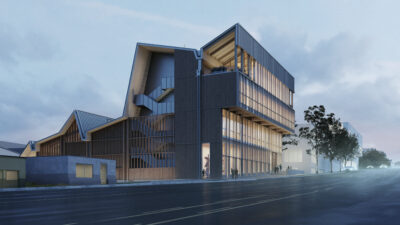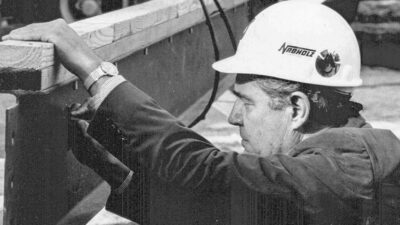Recently, Building Design + Construction reached out to Jake Nabholz, president of our south region, for his predictions on how the COVID pandemic will affect school design and construction. Below, Jake lays out how construction is changing to meet the needs of clients right now as they hold class in their current buildings, and what future school facilities might look like.
What are the long(er)-term ramifications of the Covid-19 pandemic in this sector?
We expect some of the short-term changes schools have put in place to stop the spread of the virus — such as temporary partitions and drop-off stations — to become permanent fixtures. We also expect to see future K-12 design plans to include larger common areas, like covered drop-offs and cafeterias, to allow for more room so students can social distance when necessary and to feature folding partition walls. We also expect plans to call for enhanced mechanical systems, such as HVAC systems capable of filtering air and enhanced IT infrastructure to support future touchless learning and learning-from-home options.
What impact do you think economic conditions for the remainder of the year will have on the building sector?
We are not anticipating any considerable upheavals during the remainder of this year. If anything, builders might see an uptick in work over the next 60 days as schools prepare for students to return. For example, Nabholz is working to meet these new needs by fabricating hand sanitizer stands and sturdy drop-off areas. Our environmental division has also utilized equipment the company already owned for mold remediation to offer sanitation fogging. We’ve even opened up internal “innovation challenges,” asking employees for ideas on how we can serve our clients amid this pandemic. We are committed to working with clients to help create a safe learning environment.
What is your firm’s 12- to 15-month outlook for design/construction work in this sector, and how do you see this sector’s health vis-à-vis other sectors?
This time period looks steady, too. We expect work in the next 12 to 15 months to also hold steady. However, the K-12 sector is facing another set of conditions we believe will more permanently affect this building market than the pandemic: a dwindling K-12 population. The United States’ birthrate fell for a fourth consecutive year in 2018, bringing the number of people born in the country to its lowest level in 32 years. Class sizes have peaked and are trending downwards. This, more than the pandemic, will affect the future of K-12 education building.
What are the major trends and innovations in this sector related to design, engineering, construction, development, operations/maintenance, and occupation?
Again, we expect to see designs that call for enhanced mechanical and IT systems. We also expect some building features that are a “luxury” now — touchless faucets, toilet systems, and water faucets ¬— will become a minimum standard for school facilities. In fact, we expect other touchless systems, such as automatic door-openers, will also be standard in future plans. All of these upgrades come at a cost, however. These touchless systems were items designers or constructors could quickly eliminate during the value-engineering process to keep projects in budget. We predict clients will turn to alternative means to make up this funding, such as energy performance contracting, to generate operational savings.

